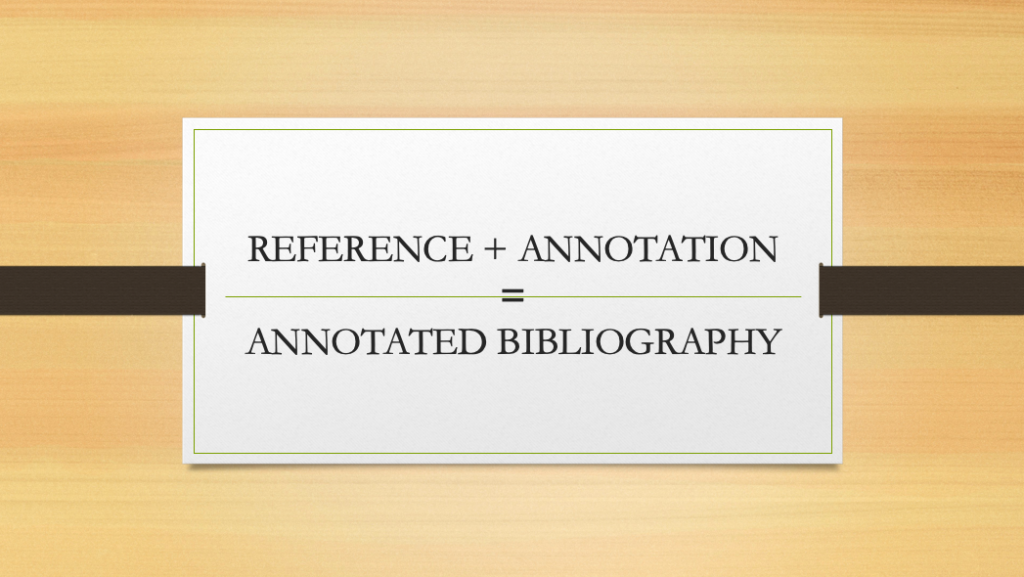How To Write An Annotated Bibliography In 3 Steps
Mike Russel
What is an Annotated Bibliography?
It is a paper that itemizes sources that were used to prepare a piece of academic writing. It is a list of citations to books, documents, articles, and other publications. A brief paragraph (about 150 words) – an annotation – follows each citation of the list. Annotations inform readers of the precision, quality, and relevance of the sources cited.
Such type of paper provides a concise account of the completed research on a given topic of an academic paper. As a rule, an annotation consists of a summary of content and its brief assessment or analysis. Concerning the assignment you’ve been given, you might be expected to summarize, reflect, evaluate, analyze, or criticize a source. It can be a part of a larger project or might be assigned as a separate task.
While writing a bibliography essay, it is crucial to follow all the instructions a tutor provided you with. Usually, those instructions specify requirements for the number of sources and their types. Instructions also state the style (MLA or APA) you must adhere to during formatting your essay.

Be it a coursework, dissertation, or research paper; annotations are something you could either master yourself or delegate to a professional service.
What is the purpose of an Annotated Bibliography?
Annotations could be of great help to you in the first place. Practicing in writing annotated bibliography samples will help you develop research skills. It will teach you to check and analyze sources for quality and relevance.
In either case, when researching a topic, you create a reference list. By summarizing a source, you delve into the subject even deeper and critically to gather information for the annotations. It encourages you to understand the topic and sources better.
The better your annotated bibliography essay example is – the better depth and quality of reading you show. It highlights sources that could be of interest to other students, researchers, and readers. In other cases, they could help organize and explore sources for further research.
How to write an Annotated Bibliography
- Pick the sources and analyze them
Once you get an assignment, you should give a critical look at your topic’s sources and research. Equally important is to examine the authors’ credentials and qualifications. The date of a study conducted matters, too. Literary movements and new thoughts appear all the time. Thus you need to make sure that the opinions and the analysis you use are relevant to your topic and current times.
Additionally to the author, be certain that the publisher or journal is prominent and reviewed by professionals in the field. Studies by unknown journals will not make a good source for your analysis and the list of arguments.
Every annotation must be either a summarization or analysis of your source. If the annotation is a part of your academic paper or research project, start creating both the citation and notes on the source you’re analyzing.
Not only will this approach help you develop the research skills and decide on sources that are relevant for your topic, but it will also save you a lot of time. Working in this manner will get both your citations and annotations practically ready before you start writing the body of a paper.
While analyzing your potential sources, you should first evaluate the author, publication, and date and then examine the content. - Step 2. Reference the citation
Referencing citations can be done in different styles. It might be MLA, APA, Harvard Referencing System, Chicago Manual Style, or other less frequently used ones. And although there is not much of a difference between them, following a citation style’s guideline is crucial for your academic paper. The one you are to write in must be stated in your tutor’s instructions.
What differs the formatting styles indeed is what the reference looks like on paper in the end. Just remember that no format affects the content of an annotated citation. Arm yourself with an assigned formatting style manual and strictly follow the instructions. - Step 3. Write the annotation
As a rule, an annotation is one paragraph of about 100-300 words in length. However, your tutor may have different ideas so remember to specify the assignment guidelines.
There are four types of annotations:
Descriptive Annotations
The title of this type speaks for itself: It describes a source. A descriptive (or also known as an Indicative) annotation provides a quick summary of the source and describes its main points.
Summarizing Annotations
Summary annotations merely give a summary of your different sources. Here, you represent the main arguments or points along with the different topics covered. This is where you show why this source was essential and appeared in your list.
Critical Annotations
After summarizing, you can either stop or take it a step further by assessing the source. To do this, you will need to contrast it and compare. Additionally, you could examine the reliability of the content and any bias it might have.
Combined Annotations
Annotations not compulsory must follow one specific format. You can combine all three types of annotations mentioned above. For instance, you can write a few lines indicating and summarizing the work and end with an evaluation.
Regardless of a type, an annotation may include the following information:
A concise summary of the source
Its strengths and weaknesses
The source’s conclusions
Reasons it is relevant in your field of study
Relationships of the source to other studies in the field
In some cases, an assessment of the research methodology
Credentials of the author’s background
Your conclusions about the source
Keep every annotation brief, do not write too much. Unless requested otherwise, annotations should not be longer than one paragraph. Do not mention unnecessary details, only relevant and significant ones. If not stipulated otherwise, write in full sentences and use the academic vocabulary.
Format for Annotated Bibliography
MLA formatted example
The MLA Style Center and the most recent edition of the MLA Handbook provide the following guidance on formatting:
- The reference page’s title is to be either “Annotated List of Works Cited” or “Annotated Bibliography”
- Locate every annotation after its reference
- Usually, annotations should not exceed a single paragraph
- Annotations must be indented one inch from the beginning of your citation
- Double-space the entire text on the page
- Mind 1-inch margins around the page
- Organize sources alphabetically either by the first word in every reference, by subject, or by publication date
Here is an MLA formatted bibliography example:

Example of APA annotations
The American Psychological Association claims that your tutor is the one who sets the guidelines. However, it requires you to format your paper according to their standard rules. Once your tutor requested an APA formatted annotated bibliography, the first thing you are to do is ask them for guidelines. Otherwise, feel free to follow the instructions mentioned below:
- Remember 1-inch margins around the page
- Double-space the entire text on the page
- Title the page – in bold and centered – “Annotated Bibliography”
- Arrange references in alphabetical order by the first word of every reference
- Write annotations on the next line straight after their paired reference
- Completely indent annotations by a ½ inch from the left
- Keep annotations brief. No more than one paragraph
Have a look at the example of APA annotated bibliography:

Still have questions?
Indeed, it can all be quite overwhelming. All those capitals, lowercase letters, quotation marks, italics, punctuation in the appropriate places…
Being regularly loaded with various types of essays, completing another one according to the whole list of requirements might be frustrating.
Do yourself a favor, and delegate some work to seasoned professionals.
Mike Russel
Latest Stories
Here’s what we've been up to recently.



